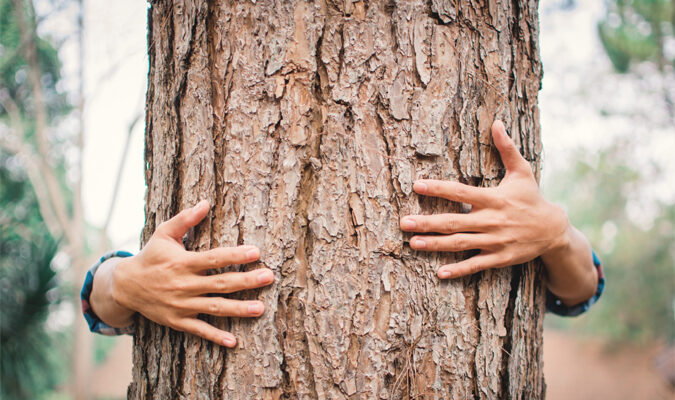Written by Jasper Boekelman and published on https://www.homoq.com/
Trees are a great investment, but there are a wide range of issues involved in selection and care. The resources you will find here provide you with information on choosing the right tree for your landscape, as well as how to care for your trees.
Trees can take up to three years to become fully established. These first three years are the most critical and when we can influence their overall health the most. We have another This guide will cover what happens after planting and the best practices for the first few years.
Green Homes Make Green Planets: A Guide to Tree Care

Did you know that there are more than 60,000 different types of trees in the world? So no matter where you live, it’s possible to grow trees in your yard.
But many people aren’t exactly sure how to take care of their trees. And with so many varieties, it can be tough to know exactly what to do.
That’s why we’ve put together this guide outlining some of the most important parts of tree care. Keep reading to learn more.
Know The Needs of Your Trees
First and foremost, it’s time to do some research. Before taking any action with the trees in your yard, you should spend some time learning about them.
There are a few key points of information you’ll want to know for each tree. First, what type of soil is best for it? And how often and how much should you water it?
Also, look to see if your trees have any sensitivities to certain environmental factors.
It used to be that you’d need to find this information in books. But in today’s digital world, a simple Google search can help you find what you’re looking for.
Water Effectively
Now for one of the most important parts of tree care: watering.
It’s no secret that water is one of the most important parts of taking care of any plant, and trees are no different. However, the specifics of watering will change depending on the tree you’re caring for.
In the heat of summer, your tree needs to be irrigated regularly. This is also true during any other drought season you have throughout the year. If you don’t water them in these dry periods, they will die.
Usually the best method for watering trees is infrequent deep watering. Instead of light watering every day, trees prefer a lot of water every once in a while.
Also, note that new trees are going to need more water than older trees. Mature trees are generally quite hearty and can withstand tougher conditions than younger ones.
It’s Pruning Time
Next, let’s cover another key part of tree care: pruning.
Every year in late winter or early spring, you should dedicate time to prune your trees before they begin growing new branches.
This process gets rid of excess growth and allows your tree to focus all its nutrients on growing high-quality new branches. It’s often a little overwhelming to prune a whole tree if you’ve never done it before.
But if you have a little experience or are feeling brave, here are some pruning tips to follow.
First, look for dead and broken branches. These are an invitation for moisture and organisms that can begin to rot your tree.
Also, look for any branches that cross. When this happens, it’s normal for a wound to form in the place where the branches rub against one another. To avoid this, get rid of the smaller branch.
Another common pruning strategy is to cut off low branches. This will allow more light to get to the space below your tree and can help your tree grow taller season after season.
Protect the Roots
If there’s something wrong with the roots of a tree, the whole tree will be affected. To ensure healthy roots, start by working on the soil.
It’s essential that your soil has proper levels of oxygen. This allows the roots to effectively absorb nutrients.
If your soil is too densely compacted, there won’t be enough space for air. And without air space, say goodbye to healthy oxygen levels.
When working on your root soil, focus on the critical root zone (CRZ). This is the area right around the tree where the core of the roots are. You should be very careful not to disturb the CRZ in terms of compacting or changing the grade of the soil there.
Recognize Tree Diseases
Last but not least, in order to properly care for your trees, you should be able to recognize common tree diseases.
The truth is that besides watering, you probably won’t have to actively care for many of your trees. But you should keep an eye out for diseases.
Look for any abnormal changes. This could be stunted growth or a fast change in color.
One of the best ways to keep an eye out for tree diseases is to regularly assess your trees. Simply keep an eye on them so you know what they look like, how they feel, and how they are growing.
This way, you’ll be able to notice changes soon after they happen. And just like in people, the best way to mitigate damage from a tree disease is to catch it early.
There are also lots of online tools available that can help you recognize the common signs of disease for your specific tree species.
The Tree Care Tips You Need
There you have it—our top tree care tips to make sure your trees are healthy and strong. Now that you’ve read through these ideas, it’s time to put them into place.
Start by researching the types of trees you have on your property so you can properly take care of them. And then get started watering, pruning, and caring. Soon you’ll enjoy a healthy, vibrant yard with beautiful trees.
Original post here https://lineagetreecare.com/tree-service/10-signs-your-tree-needs-pruning/.


